| Photojournal
- 24 May 2005
Further
afield at Colony Farm
|
A day or so after my
outing on the 16th, I discovered that my main surgical incision
had become infected and opened back up. My doctor put me on antibiotics
and I forced myself to take it easy for a week to try to allow
time for it to heal.
So I didn't get out
again until the afternoon of the 24th. I decided to head to Colony
Farm, and arrived there with the sun brightly shining overhead.
It was pretty warm.
As I started down the
path from the parking lot, I happened upon an interesting sight.
There was a worm in the middle of the path, and a bug near the
worm.
|
|
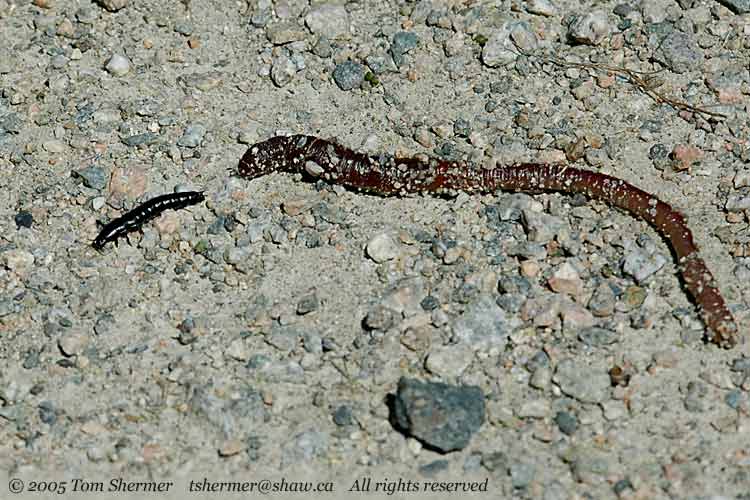 |
|
I'm not really sure
what kind of bug that is. All of its legs are up near its head,
which is on the left (it's facing away from the worm), and it
has a multi-segmented abdomen. This might mean that it's an earwig
of some sort, but not the common European Earwig. Then again,
maybe it's something entirely different, like a caddisfly larva.
The worm wasn't really
going anywhere, and I figure that if he were left alone, he might
dry up, being in the middle of the path in the hot sun. Maybe
he's already started that process; he's got a lot of rubble stuck
to his body. I'm not sure if that's indicative of anything, though.
But it was not the
fate of this worm to be left alone. The insect was coming over
to it every now and then and doing one of two things: (apparently)
biting the worm, or trying to crawl under it. Whenever it bit
the worm, the worm would spasm away from the insect. Here's the
insect, now facing the worm, about to take a nip.
|
|
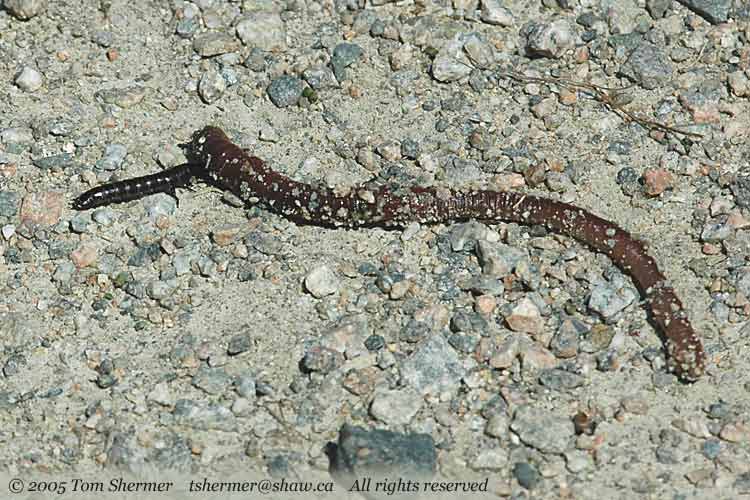 |
| I guess
that if the worm was jerking away from the bite, it was still alive
(or still had some reflexes). After the nip, the insect crawls under
the worm. |
|
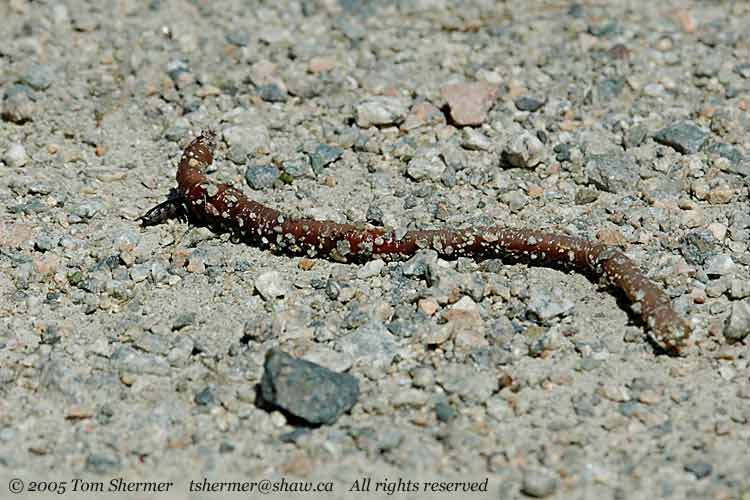 |
| And here
the insect is doing circles under the worm. |
|
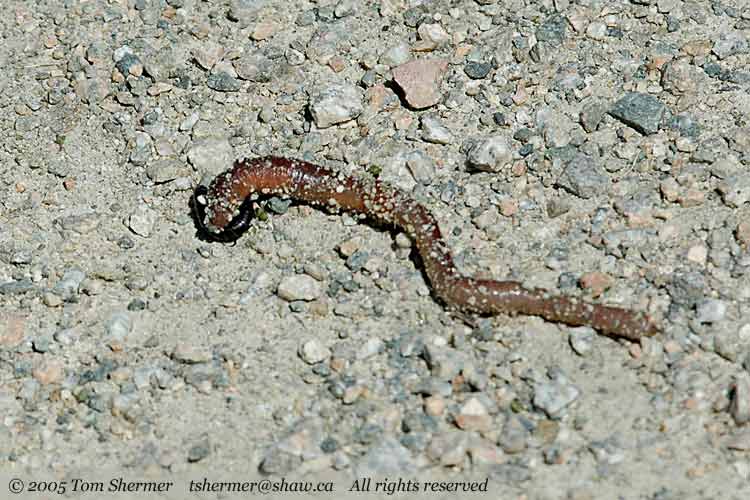 |
|
It did this sort of
thing many times, turning away, but returning to bite or crawl
under, never wandering too far from the worm.
I can think of two
possible explanations for this behaviour. The first is that the
insect is actually preying on the worm, and in crawling under,
it's trying to carry the worm off somewhere. The second is that
the insect is just looking for some shade to hang out in, and
the only nearby shade is under the worm (and maybe it's moist
under there, too). The biting would then just be an attempt to
dig in under the shady spot. Those are my two hypotheses, but
I really have no inkling as to which if either is true.
After watching those
two for a while, I continued on down the trail, on the dyke west
of the river.. I soon came to a place where a pipe passes under
the dyke and stairs lead down both sides. There I found a Great
Blue Heron with his feathers puffed out a bit.
|
|
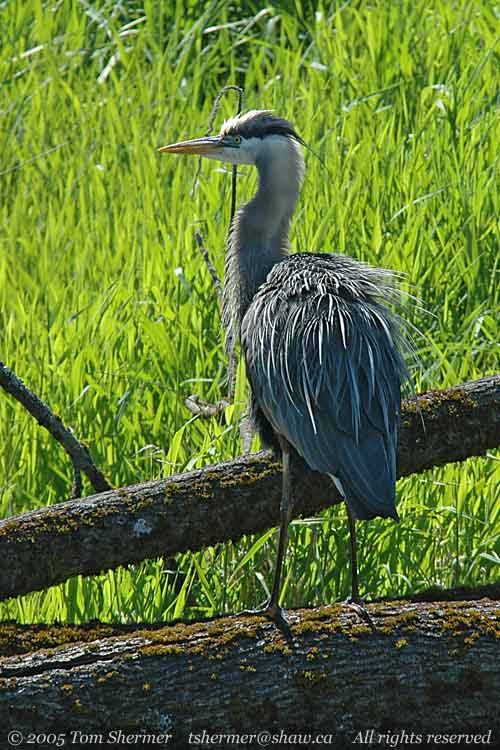 |
|
Next I reached a decision
point: I could either continue straight on (vaguely north) or
turn left to do a leg parallel the railroad tracks back towards
the park entrance. I'd been down the path by the tracks before,
but I'd never gone very far on the path in front of me. I decided
that I would explore it fully; I knew that it would bring me out
to a major road.
So I traipsed forward,
and soon found myself by a meadow with some flowers on both sides
of the path. One of the white flowers flew up and around a bit,
and looking closely at where it landed, I found that it had metamorphosed
into a butterfly. A Mustard White, to be precise.
|
|
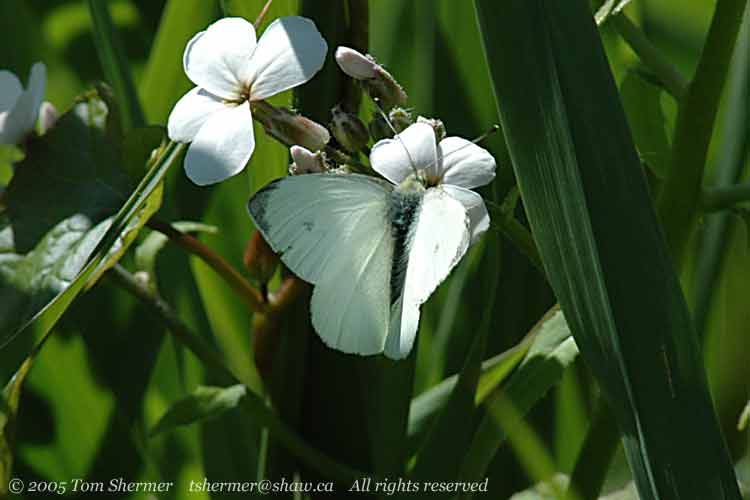 |
| That interesting
experience got me looking for butterflies, and I soon found a Painted
Lady on the purple flowers. |
|
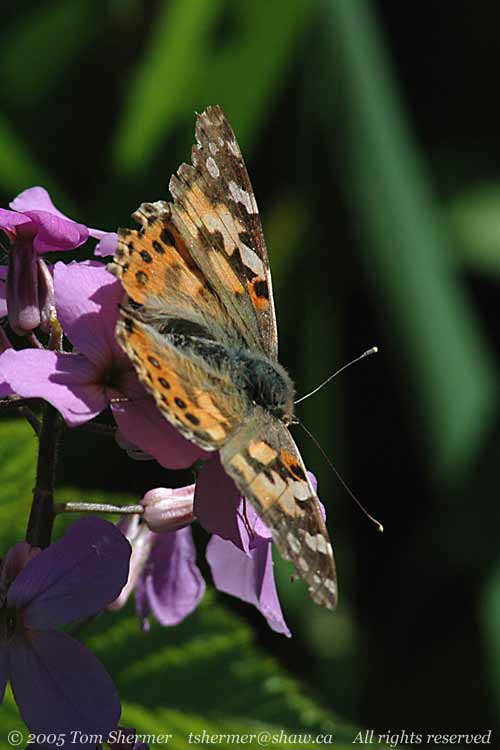 |
| At this
point in the trail, there weren't any overhanging trees, so I could
see a fair amount of sky. While scanning that sky, I found a Northwestern
Crow who was harrassing a Red-tailed Hawk. |
|
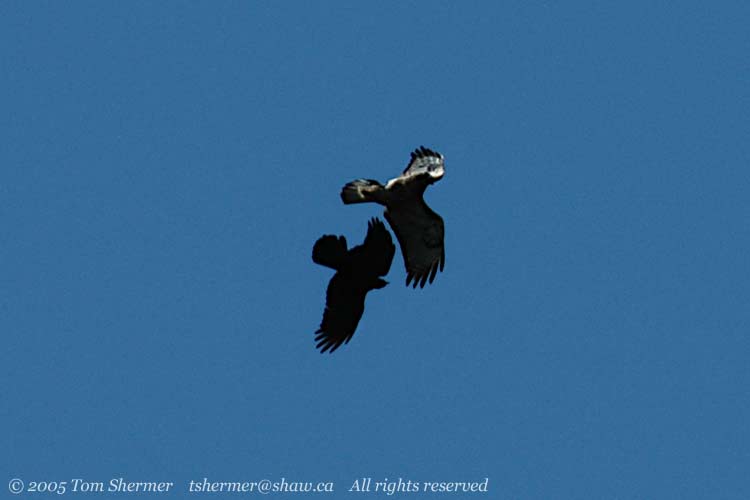 |
|
The crow didn't seem
to be taking his job all that seriously, and gave up within about
20 seconds of me training the camera on him. Maybe on-camera work
is against crow union regulations, or something.
The Red-tailed didn't
seem to mind, and he continued circling around. I got a few shots
of him, but there wasn't quite enough light hitting his underside
to get any good ones.
|
|
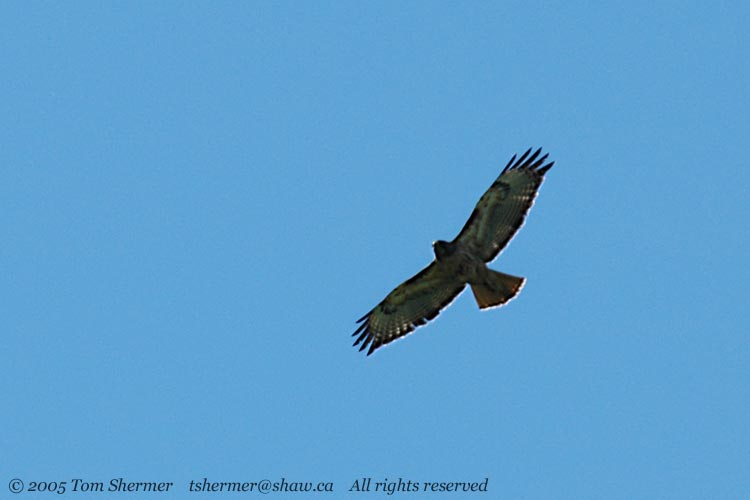 |
| I turned
my attention back to the fluttery things, and found one that was
displaying colors and patterns that I hadn't seen before. I gave
chase, and after a few frustrating near-posings, I finally caught
the thing perched on the ground with its wings open. |
|
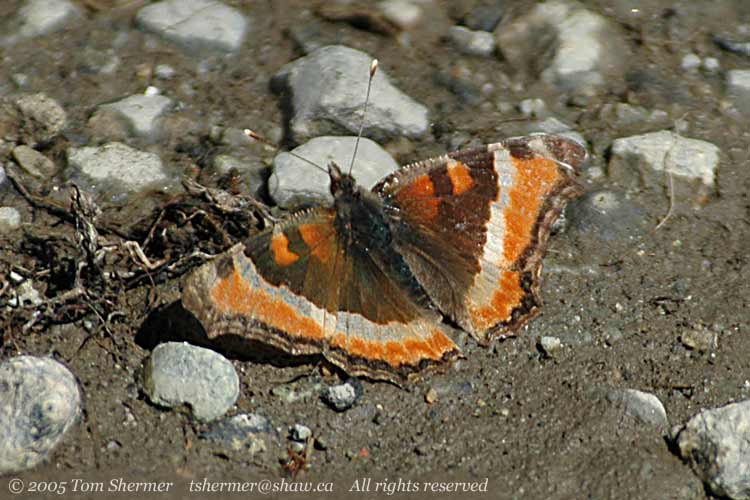 |
|
That is a Milbert's
Tortoiseshell, and it was the first time I'd ever seen one. I
like the pattern on the front of its wings; it looks like cat
eyes to me. (And, naturally, I like cats.)
Now I was pretty excited,
having seen a lifer butterfly, and when I got back to the meadow
(I had left it chasing the tortoiseshell) I found a few bees in
the flowers. Here's a bee of the bumble sort.
|
|
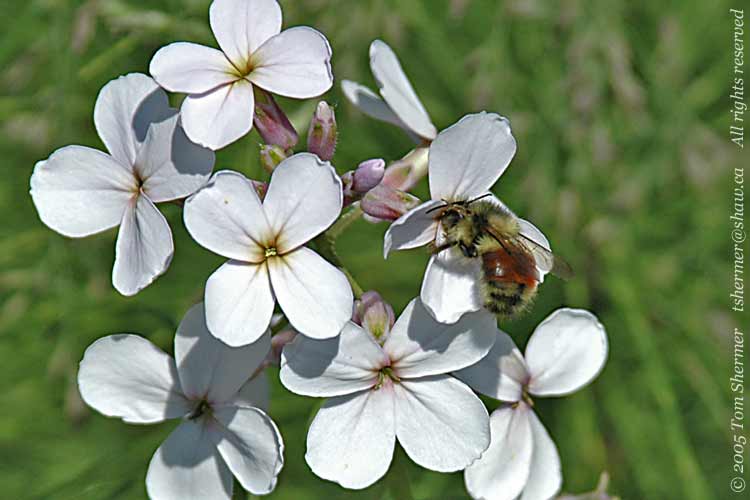 |
| And the
following one is of the honey sort. Check out the big bags o' pollen
on his rear legs. |
|
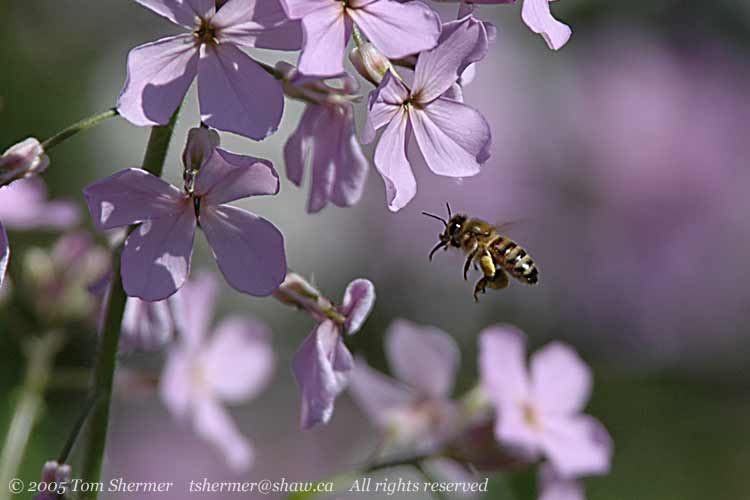 |
| While I
was paying attention to the small stuff around the flowers, I noticed
a few not-very-plant-looking things a little ways down the stems.
It turns out that they were snails, and there were a lot of them
on the flowers, mostly around 25 or 30 cm off the ground. I think
that they were Oregon Forestsnails (Allogona townsendiana),
but when I took the photos I didn't know that I should be checking
to see if they had parietal denticles or bulging basal calluses,
so I can't be certain. |
|
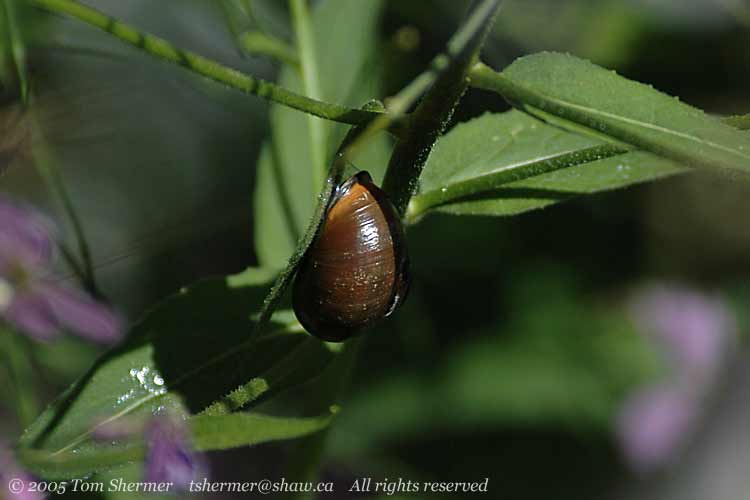 |
|
Now if I only knew
what parietal denticles and basal calluses were, I'd be ready
for next time I see 'em.
I continued on down
the trail, happy to have seen some brown and orange
snails and blissfully ignorant of my ignorance of molluscan
anatomy. The trail became a trail through the woods, with trees
overhanging pretty much all the way. It turned out that I hadn't
realized was how far it was to the end of the trail. It was a
major walk, at least in the state of health that I was in. It
was probably a lot more than my doctor would have advised. Worse
yet, there were almost no birds to be found.
So I was tired and
a bit bored by the time I got to the road. Then a noisy bird perked
me up. Looking around, I found the loudmouth—a Black-headed
Grosbeak—up in a tree fairly high above me.
|
|
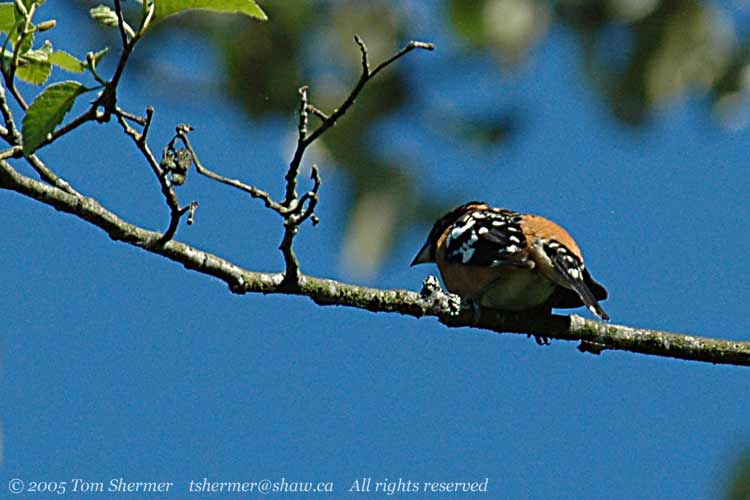 |
| That individual
never came any further down, but a little later, in a little less
sunlight, I found another one. Here's what they look like from the
side. |
|
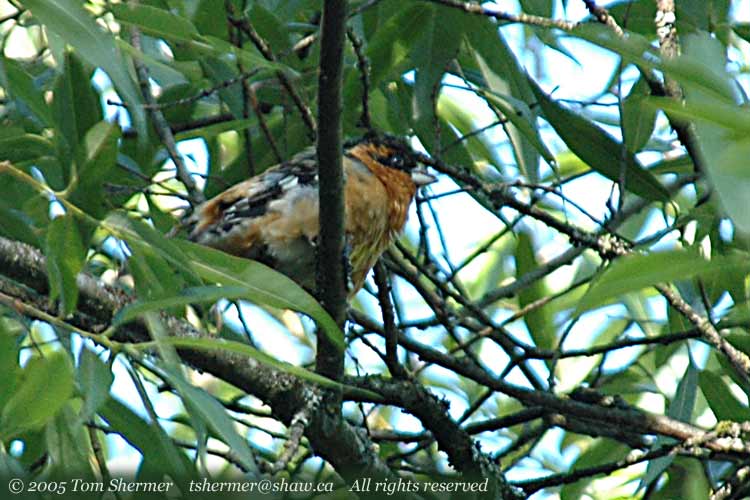 |
|
But at this point I
was tired and at the end of the trail, and I faced the relatively
daunting task of walking my tired body back to my car with few
birds to look at. I took the auto bridge across the river and
returned on a trail on the other side; so that at least I'd have
new scenery to look at on my way back.
I walked most of the
way without encountering much, but about ten minutes before I
reached the part of the park that I was familiar with, I found
a male Rufous Hummingbird perched beside the path.
|
|
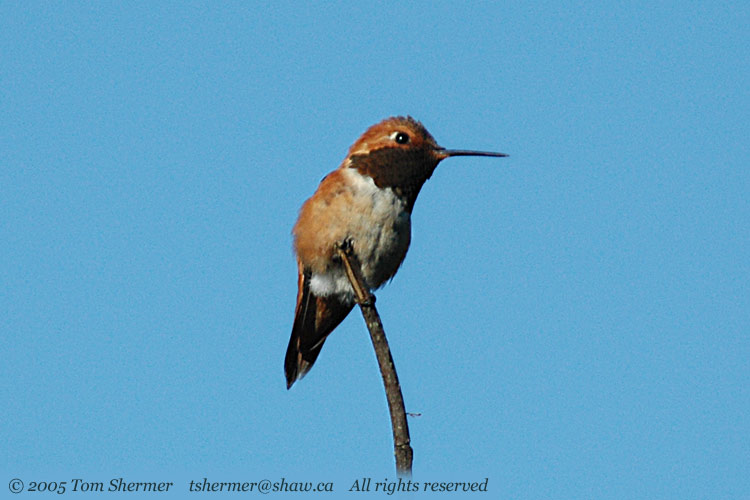 |
| Sometimes
I forget how cool hummingbirds really are, but this guy reminded
me of one of their really neat features: irridescent plumage. By
turning different ways, his throat flashed different colors. Here
he's got it looking bronze, |
|
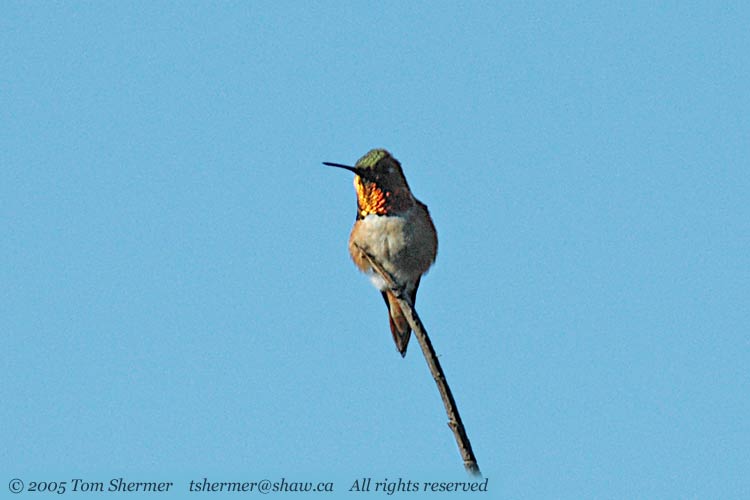 |
| and here's
a dramatic shiny red for you. |
|
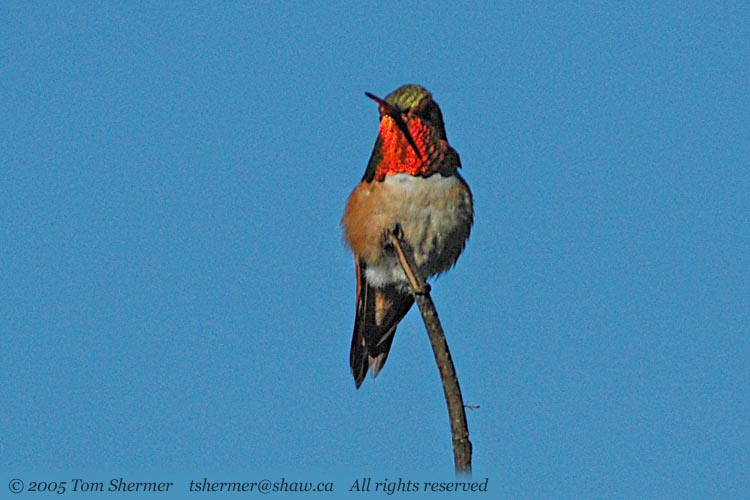 |
|
Now, that was very
cool and I spent some time chasing and photographing him. He was
kind and did a lot of perching for me.
Back in terra cognita,
another Black-headed Grosbeak caught my attention, and while I
was watching him, a Common Yellowthroat popped out.
|
|
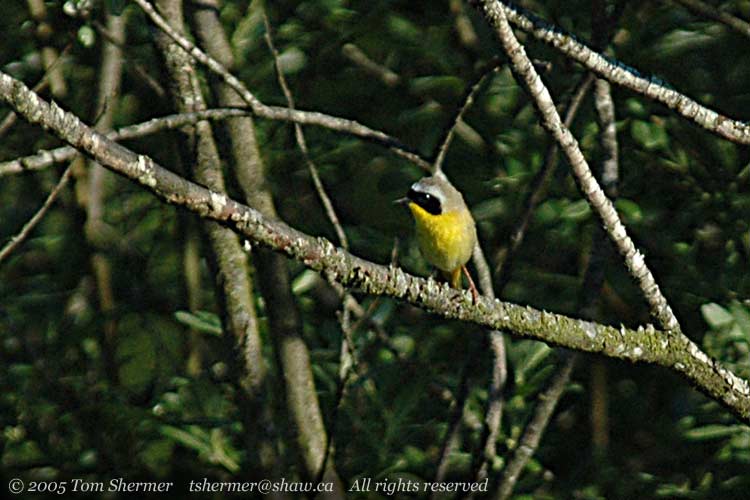 |
| At this
point, though, I was so starved for birds that I was taking photos
of the Song Sparrows, too. |
|
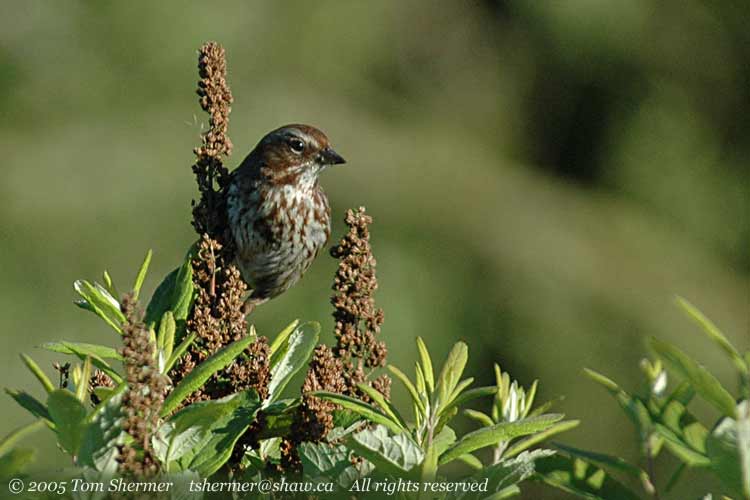 |
|
But that sparrow was
my last bird in the park, and I was grateful to get back to my
car, its air conditioner, and a bottle of water. After resting
my aching legs a few minutes, I headed home.
Back at home, I found
my friend Sonic in the courtyard and took a few shots of him.
He came over to say hi and I caught this nice face shot as he
approached.
|
|
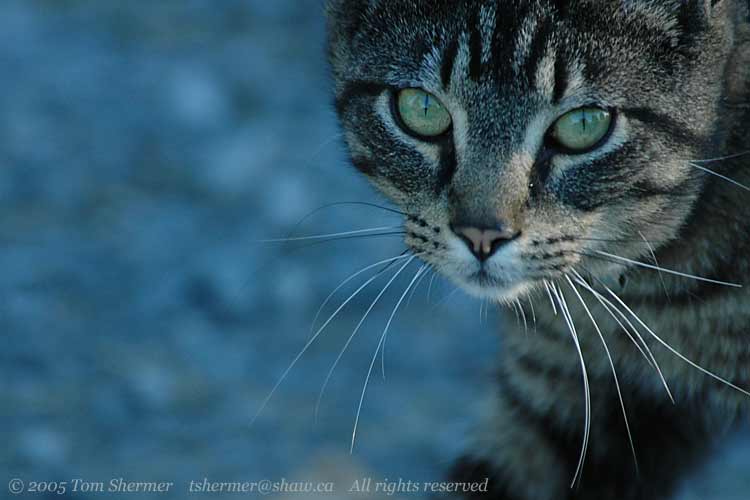 |
|
He's a pretty friendly
little guy, and seeing him was a nice end to my long day.
Hoping I don't develop
bulging basal calluses of my own,
Tom
|
|
|